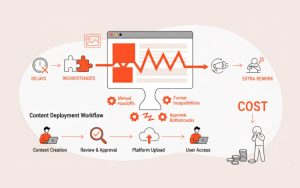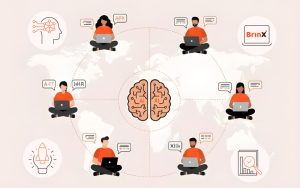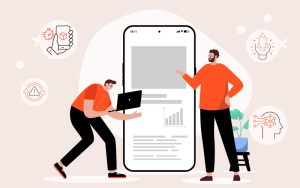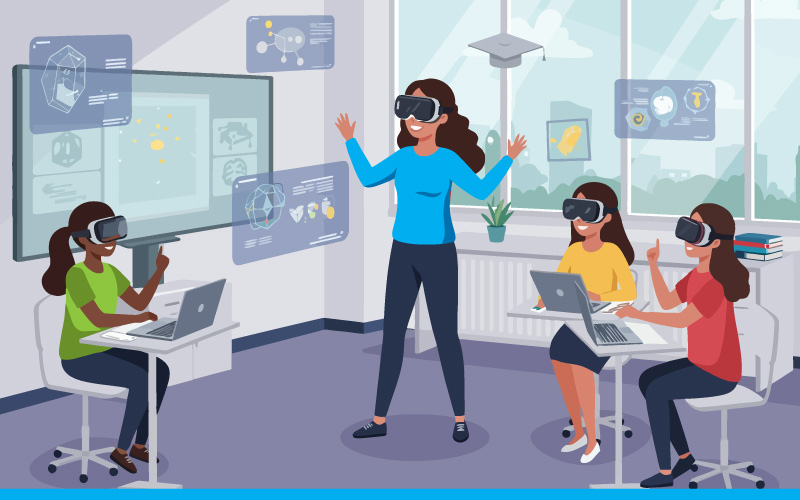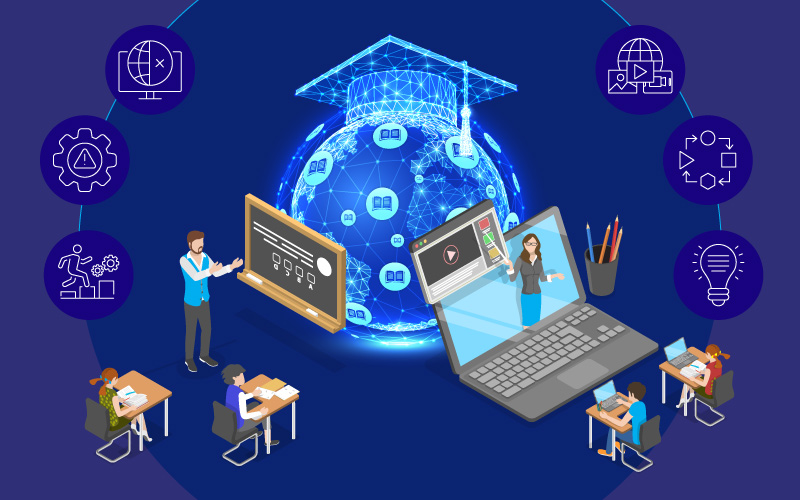Let’s start with a moment most professionals know too well. You sit through a training session. You take notes. You nod politely. You even promise yourself you’ll apply everything you learned. But then real work rushes back in, priorities shift, deadlines stack up, and those skills fade into the background faster than anyone wants to admit.
At MITR Learning & Media, we’ve seen this pattern across industries, roles, and experience levels. Not because people lack interest. They simply lack timing. Busy professionals need learning when the problem appears, not when the training calendar tells them it’s time.
That’s why learning in the flow of work has become one of the most powerful approaches for skill development today. It’s practical. It’s fast. And most importantly, it works.
And there’s solid data to back this up. Deloitte research found that employees only have 24 minutes a week, yes, per week, for formal learning. Meanwhile, Gartner reports that 70 percent of skills employees use today were learned on the job, not in a classroom or LMS course. The takeaway is simple. The closer learning is to the moment of need, the more likely it is to stick.
Let’s break down what makes this approach so effective and how companies can use it to support real performance change.

What Is Learning in the Flow of Work, And Why Do Professionals Prefer It?
If you’re wondering what learning in the flow of work actually means, think of it as learning that lives inside everyday tasks instead of sitting in a separate training container.
It’s frictionless. It’s contextual. And it answers the core question professionals ask every day:
How can I learn without stopping my work?
Here’s what it looks like in real environments:
-
A quick prompt inside Microsoft Teams that reminds you how to handle a tough client moment.
-
A small CRM-based checklist that shows up before you log a sales call.
-
A 60–90 second explainer that appears right when a manager prepares for a performance conversation.
People don’t want hour-long modules for questions they need answered in minutes.
They want clarity, not coursework.
This is where just-in-time learning shines. It’s what makes learning in the flow of work more than microlearning. It’s microlearning delivered at the exact moment someone needs it.

Why Learning in the Flow of Work Outperforms Traditional Training
We’re often asked: Does learning in the flow of work actually outperform classroom or eLearning training?
The data says yes.
LinkedIn’s Workplace Learning Report noted that 94 percent of employees prefer learning that fits naturally into their day. And the Forgetting Curve, validated for over a century, shows that learners forget up to 75 percent of content within two days if they don’t apply it.
Traditional training separates learning from action.
Workflow learning connects them.
That connection changes everything. When people learn at the moment they actually need a skill, the brain marks it as important. Context becomes a memory anchor. A short, applied tip in the middle of a task often beats an entire hour-long session because the learner uses it immediately.
And this reduces cognitive load. Instead of holding unused information for later, employees get exactly what helps them move from stuck to solved.

Learning in the Flow of Work as the Just-In-Time Learning Solution
Organizations everywhere are trying to solve the same problem: How do we shorten training without sacrificing quality?
Just-in-time learning gives teams a realistic path. It delivers guidance right before the moment of use, which makes the skill far more likely to transfer.
Examples from our work at MITR Learning and Media:
-
A manager preparing for a difficult conversation gets a short refresher on tone and framing directly inside the HR system.
-
A customer support agent sees a small troubleshooting flow when they open a certain type of ticket.
-
A sales rep receives a call-ready coaching prompt that helps them respond to objections with confidence.
When companies adopt learning in the flow of work, the impact tends to follow a pattern:
-
Fewer mistakes because instructions are clear and immediate.
-
Faster task completion because employees don’t need to pause work to search for answers.
-
Higher confidence because support feels like part of the job, not part of a separate lesson.
-
Better retention because learning happens in real time, not in isolation.
This is the kind of real-world performance shift that traditional training alone rarely produces.

How Microlearning Supports Learning in the Flow of Work
We hear this question a lot: Is microlearning the same as learning in the flow of work?
Not quite.
Microlearning is the format.
Flow-of-work learning is the moment.
Microlearning keeps content small enough to digest quickly.
Just-in-time delivery ensures it shows up exactly when it matters.
When these two come together, you get a natural learn-apply-improve cycle. That’s the sweet spot for skill building. No overwhelm. No time wasted. Just practical, fast reinforcement.
And this aligns with what cognitive science tells us. Shorter bursts of information reduce overload and increase retention, especially when paired with immediate application.

A Quick Story About Why This Matters
There was a moment that reshaped our approach at MITR Learning & Media.
A global client launched a new collaboration tool. They produced all the right assets, videos, demos, help docs, and orientation sessions. On paper, it looked perfect.
But when rollout day arrived, adoption stalled.
When we spoke to employees, we heard the same thing repeatedly:
“I learned it too early. When the time came to use it, I had forgotten everything.”
So, we redesigned the experience. Instead of more training, we built subtle, in-tool nudges that appeared when someone performed a specific action for the first time. Short. Useful. Contextual.
Within weeks, adoption jumped. Not because employees suddenly became eager learners.
Because the learning finally matched the moment.
That’s the reality: learning in the flow of work embraces. People don’t struggle because they can’t learn. They struggle because they’re asked to learn too soon or too far away from real work.

Practical Ways Companies Can Implement Just-In-Time Learning
If you’re wondering where to begin, here are approaches that consistently work across industries:
Keep learning short.
If it forces someone to stop working, it’s too long.
Place learning inside existing tools.
Whether it’s Slack, Teams, browsers, PM tools, or CRMs, the learning should meet the user where they already are.
Break big training into searchable, modular snippets.
Employees don’t need a full course. They need the specific answer to the exact problem they’re facing.
Use nudges, not interruptions.
Nudges support. Notifications distract.
Design for real workplace scenarios.
The closer the example is to daily work, the faster the behavior change.

Real Examples of Learning in the Flow of Work Across Modern Workplaces
Teams using this approach see noticeable improvements:
Project Teams
Access task-level prompts inside PM tools, reducing planning delays.
Customer Support
Use real-time checklists inside ticketing systems to improve resolution accuracy.
New Managers
Get short, timely coaching tips before pivotal conversations.
Sales Teams
Improve close rates with micro-coaching delivered seconds before calls.
Each example shows how workflow learning removes friction and builds confidence at the same time.

Common Mistakes to Avoid When Building Learning in the Flow of Work
A common search query we see is: What mistakes should companies avoid with just-in-time learning?
Here are the big ones:
Too much content.
If it scrolls, it’s probably too long.
No context.
Learners need to know why something matters right now.
Ignoring accessibility.
Even the shortest content must be clear, readable, and inclusive.
Over-nudging employees.
More isn’t better. Relevance is.
Isolated microlearning modules with no learning progression.
Short lessons only work when they connect to a bigger skill journey. Without progression, employees accumulate fragments rather than build mastery.

Conclusion: Learning in the Flow of Work Is How Modern Skills Are Built
Professionals want to grow, but they don’t want to be pulled away from their priorities. Learning in the flow of work blends skill building with everyday tasks, so development feels natural instead of disruptive.
At MITR Learning& Media, we design learning ecosystems built around real behavior change. Not long modules. Not one-off workshops. But learning that shows up exactly when employees need it most.
If you’re building a workplace where learning finally sticks, we’d love to support you.

FAQs
What is AI in eLearning?
AI in eLearning refers to the use of artificial intelligence tools and models to automate, personalize, and optimize instructional design and learning delivery.
How is AI transforming instructional design?
AI is reshaping instructional design by automating repetitive tasks, generating data-driven insights, and enabling adaptive learning paths so designers can focus on creativity and strategy.
Can AI replace instructional designers?
No. AI enhances instructional design by managing mechanical tasks, allowing designers to invest their time in creativity, empathy, and alignment with business goals.
What are the benefits of using AI in eLearning?
Key benefits include faster course creation, adaptive personalization, smarter assessments, better learner analytics, and continuous improvement through feedback loops.
How does BrinX.ai use AI for instructional design?
BrinX.ai automates course structure, pacing, and assessment logic using AI-driven design principles, while maintaining strong version control and governance.
What challenges come with AI in eLearning?
The main challenges include ethical oversight, data bias, intellectual property questions, and ensuring human judgment remains central in the design process.
What instructional design models work best with AI?
Models like ADDIE, SAM, and Gagne’s 9 Events integrate seamlessly with AI, turning static frameworks into dynamic, data-responsive design systems.
How can AI improve learner engagement?
AI supports adaptive content, predictive nudges, and personalized reinforcement, aligning with motivation models like ARCS and Self-Determination Theory.
Is AI-driven learning content ethical?
It can be, when guided by transparency, inclusivity, and diverse data sets, ensuring that algorithms serve learning rather than bias it.
What’s next for AI in instructional design?
Expect AI to drive conversational learning, generative storytelling, and predictive analytics that anticipate learner needs before they arise.

Soft Skills Deserve a Smarter Solution
Soft skills training is more than simply information. It is about influencing how individuals think, feel, and act at work, with coworkers, clients, and leaders. That requires intention, nuance, and trust.




